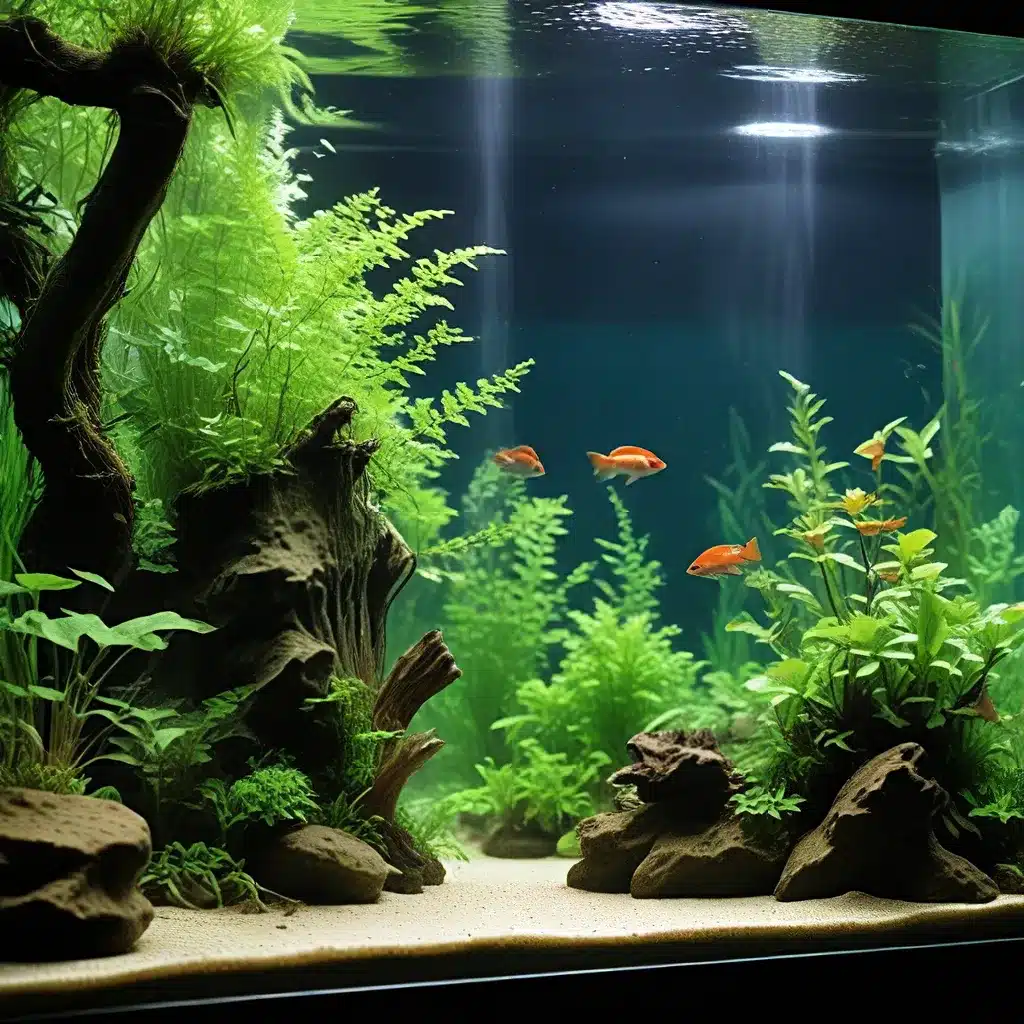
Understanding the Nitrogen Cycle
Maintaining a thriving aquarium ecosystem is a delicate balancing act, and at the heart of it all is the nitrogen cycle. This natural process is crucial for regulating the levels of harmful compounds like ammonia and nitrite, ensuring the water quality remains optimal for your aquatic inhabitants.
When you first set up a new aquarium, the nitrogen cycle has not yet established itself. During this initial phase, it’s essential to closely monitor water parameters and take proactive steps to support the growth of beneficial bacteria. These microorganisms are the unsung heroes, transforming toxic substances into less harmful compounds that your fish can safely tolerate.
The nitrogen cycle involves two key groups of bacteria: Nitrosomonas and Nitrobacter. Nitrosomonas bacteria consume ammonia, converting it into nitrite, a compound that is still toxic to fish. Nitrobacter bacteria then step in, converting the nitrite into nitrate, the least harmful of the nitrogen compounds.
This continuous cycle of ammonia, nitrite, and nitrate is a delicate balance that must be maintained for a healthy aquarium ecosystem. By understanding the dynamics of the nitrogen cycle, you can effectively “cycle” your aquarium, establishing a thriving colony of beneficial bacteria and creating a safe, stable environment for your aquatic life.
Cycling Your Aquarium: The Essential Steps
Preparing the Tank
Before you can begin the cycling process, it’s important to have your aquarium set up and ready. This includes:
- Establishing the Substrate: Choose a suitable substrate, such as gravel or sand, that provides ample surface area for beneficial bacteria to colonize.
- Introducing Decor and Plants: Add any aquascaping elements, like driftwood, rocks, and live plants, as they too can serve as a home for the bacteria.
- Filling the Tank: Fill the aquarium with dechlorinated water, ensuring the necessary water parameters are in order.
- Installing the Filtration System: Set up your filtration system, as this is where the majority of the beneficial bacteria will reside.
Seeding the Cycle
There are a few methods you can use to kickstart the nitrogen cycle in your new aquarium:
-
Fishless Cycling: This approach involves adding a source of ammonia, such as pure ammonia or rotting shrimp, to the tank. This provides the initial food source for the Nitrosomonas bacteria to begin growing.
-
Starter Culture: You can also purchase a bacterial supplement or “starter culture” from your local aquarium store. These products contain a concentrated dose of the necessary Nitrosomonas and Nitrobacter bacteria to accelerate the cycling process.
-
Established Media: If you have access to an established aquarium, you can use some of the filter media or gravel from that tank to introduce the beneficial bacteria into your new setup.
Regardless of the method you choose, it’s crucial to avoid adding any fish during this initial cycling phase. Introducing fish too soon can result in their exposure to the toxic buildup of ammonia and nitrite, potentially leading to stress, illness, or even death.
Monitoring the Cycle
As the nitrogen cycle progresses, you’ll need to regularly test the water parameters to track the process. Look for the following indicators:
-
Ammonia Spike: During the early stages, you’ll likely see a spike in ammonia levels as the Nitrosomonas bacteria begin to grow and consume the available ammonia.
-
Nitrite Spike: As the Nitrosomonas bacteria thrive, they’ll produce nitrite as a byproduct. This will result in a nitrite spike, as the Nitrobacter bacteria work to convert it into nitrate.
-
Nitrate Buildup: Eventually, the Nitrobacter bacteria will outpace the Nitrosomonas, and you’ll start to see a gradual increase in nitrate levels.
-
Stabilization: When the ammonia and nitrite levels both read 0 ppm, and the nitrate level is below 20 ppm, your aquarium is considered “cycled” and ready for the introduction of fish.
During this cycling process, it’s crucial to perform regular water changes to maintain safe water conditions and prevent the accumulation of toxic compounds. Aim for 25-50% water changes every few days, using a water conditioner to remove chlorine and other harmful substances.
Maintaining a Healthy Cycle
Even after your aquarium is fully cycled, the nitrogen cycle will continue to be an ongoing process. To ensure long-term stability and the well-being of your aquatic inhabitants, follow these maintenance tips:
-
Monitor Water Parameters: Regularly test for ammonia, nitrite, and nitrate levels, and be prepared to perform water changes if any of these readings start to creep up.
-
Maintain Filtration Efficiency: Keep your filtration system clean and functioning at its best to support the beneficial bacteria. Avoid replacing filter media all at once to preserve the established colonies.
-
Manage Waste and Feeding: Properly dispose of uneaten food and fish waste to minimize the buildup of ammonia. Feed your fish the appropriate amount to avoid excess waste.
-
Introduce New Fish Slowly: When adding new fish to your cycled aquarium, do so gradually, allowing the biological filter to adapt to the increased bioload.
-
Consider Live Plants: Aquatic plants can be a valuable addition, as they absorb nitrates and help maintain a balanced ecosystem.
By mastering the art of cycling your aquarium and maintaining a healthy nitrogen cycle, you’ll create an oasis of vibrant, thriving aquatic life. Remember, patience and diligent monitoring are key during this initial setup phase, as the foundation you build will ensure the long-term success of your aquarium.
To learn more about King Aquarium’s’ aquarium care resources and explore our wide selection of aquarium equipment and livestock, visit our website today.

